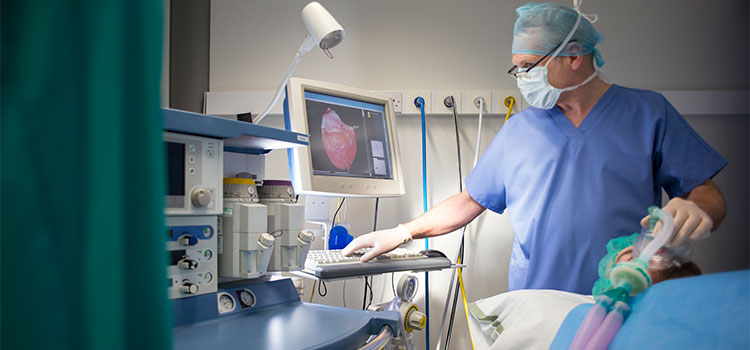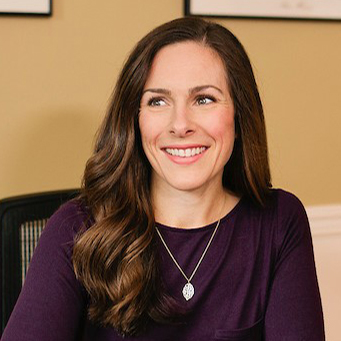Nurse Anesthetist Career and Degree Guide
Other Advanced Nursing Careers
Nurse Anesthetist Job Description

Certified registered nurse anesthetists (CRNAs) practice in a growing field of healthcare, and many work independently. CRNAs collaborate with physicians, anesthesiologists, surgeons, dentists, and other professionals while overseeing the use of anesthesia in medical procedures.
Whether you’re just starting a nursing career or you’re an experienced registered nurse (RN) looking to advance, working to become a CRNA can be a rewarding choice. Not only do CRNAs have a high degree of autonomy, but they’re also highly paid.
CRNA Roles and Responsibilities
CRNAs are a type of advanced practice registered nurse (APRN) whose primary responsibilities are to administer anesthesia during medical procedures and monitor patients during recovery. They determine the amount and type of anesthesia needed—general, local, or regional—as well as the method for administering anesthesia, including injections, inhalants, and oral medication. Since there are many risks that can come with anesthesia, CRNAs require more education and have greater accountability than traditional registered nurses (RNs).
Because anesthesia can come with risks, CRNAs require more education and have greater accountability than registered nurses.
Some CRNAs work with a broad range of patients, while others specialize in subfields such as obstetrics, pediatrics, cardiovascular, neurosurgery, and more. Going under anesthesia can be unnerving for some patients, so as a nurse anesthetist, you’ll not only need to be highly trained but also compassionate.
CRNA Daily Duties Put the Focus on Patients
Your role as a CRNA can vary depending on where you work, but all certified registered nurse anesthetists work directly with patients, their families, and other medical staff. Nurse anesthetists can work as part of a team under the supervision of doctors, or independently, depending on state laws. Your daily responsibilities may include:
Along with these duties, some CRNAs take on administrative tasks, such as ordering anesthesia, training new staff, and overseeing department finances. Others work in roles that influence the field of anesthesia as a whole, teaching the next generation of CRNAs, serving on a state board of nursing, or working with organizations that set medical standards.
Is a Nurse Anesthetist the Same as an Anesthesiologist?
Both CRNAs and anesthesiologists administer anesthesia to patients, but there are differences in their roles and education. An anesthesiologist is a medical doctor (MD) with at least eight years of postgraduate training and education, including four years of medical school and four years of residency. CRNAs must have at least a Master of Science in Nursing (MSN), but that will change in 2025, when future nurse anesthetists will need a doctoral degree to enter the field.
Another difference is that anesthesiologists might work as the heads of anesthesiology departments in hospitals and lead teams that include CRNAs. In some states, nurse anesthetists are required to work under the supervision of anesthesiologists. In others, they can work on their own and without supervision.
Where Do CRNAs Work?
CRNAs work in a variety of medical settings. Some common employers include:
Physicians’ and dental offices are two examples of workplaces where a nurse anesthetist might work alone, without the supervision of an anesthesiologist.
Nurse Anesthetist Salary and Job Outlook
Working directly with patients to ensure their comfort and safety can be deeply fulfilling. What’s more, CRNAs earn some of the highest salaries of any APRN. According to the U.S. Bureau of Labor Statistics (BLS), CRNAs make an average annual salary of $212,650, with the top 10% earning well over $205,000 per year.
CRNAs are expected to see job growth of an impressive 9% through 2032.
Compared to the national average of 3% job growth for all occupations, CRNAs are expected to see an impressive 9% growth through 2032, according to the BLS. Demand for CRNAs is particularly high in rural areas, where hospitals many not have anesthesiologists and instead rely on CRNAs to administer anesthesia.
Advancing Your Career
If you want to advance your career beyond the OR, earning a doctoral degree could open a path to leadership, administrative, and university-level teaching roles. Plus, you can also expect a higher salary.


With professional insight from:
John C. Preston, DNSc, CRNA, FNAP, APRN
Chief credentialing officer for the National Board of Certification and Recertification for Nurse Anesthetists (NBCRNA)
